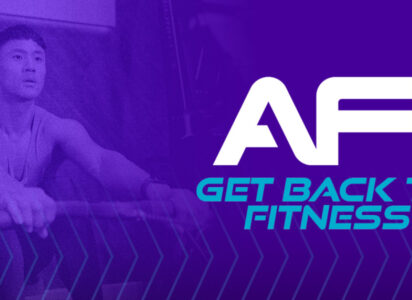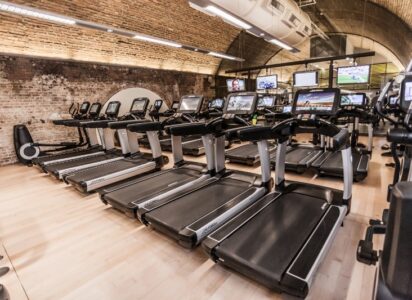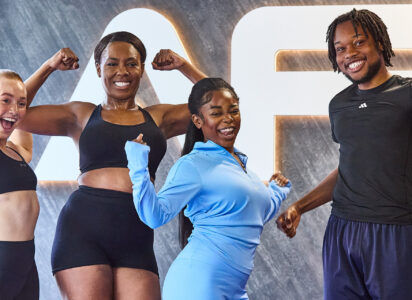Fitness trackers can be a great idea. My favourite saying is “if you don’t measure, you can’t improve”. Monitoring your progress gives you a starting point so you can easily see how far you’ve come.
But there are so many options out there now it’s easy to feel bewildered. Have you avoided data in the past because you’re unsure of the outcome or perhaps overwhelmed by the technology?
We’re here to help give you confidence in what’s available and to show you the fantastic benefits of using trackers. For starters, it’s not just about seeing huge improvements. Making small gains or just being able to track frequency, encourage friends and monitor your progress can be immensely encouraging. Once people see data and experience tracking, they get a sense of renewed interested in their fitness journey and often crave more – above and beyond counting steps and basic heart rate. Modern fitness watches have a far greater scope, including graphs, leader-boards, improvement levels and badges to be earned as you progress.
Why are trackers so useful?
Some of my favourite parameters are heart rate variability (HRV), training zones and GPS. Here’s why
- HRV – helps you observe sleep patterns and establish your recovery level.Sleep is such an important factor when it comes to recovery and lowering stress. We are much more holistic in our approach to health now. Focusing on lifestyle is an essential part of any health goal or aspiration.
- Varied training zones – These allow you to use different training levels depending on your activity. This helps because your heart rate will react differently based on the type of activity. For example running vs swimming vs cycling. Now you can compare sessions to establish personal patterns or trends in your effort. This is particularly motivating when you’ve had a hard day at work and your performance may have dropped by a few percent. The zones are usually colour coded for ease of understanding.
- GPS data – If you’re exercising outside, this is a huge benefit. You’ll be able to see on your summary, a map of where you ran, your speed, elevation and cadence. It may sound like a lot, but after a few runs, you’ll be hooked and your watch will even congratulate you on your improvements. Once you hook up with friends, they’ll be giving you kudos too! Little pats on the back to encourage you to keep going. GPS is also a great safety feature, if like me, you run or cycle alone. The app that pairs with your watch generates a link of your GPS, which you can share with friends and family so they know exactly you are should there be a problem. Or it can be used if they want to watch you during a race or event. They’ll also give you kudos after each activity and it’s always great to receive encouragement.
Things have really moved on quickly when it comes to fitness trackers/watches. The design and appearance is smooth and slick to match your outfit or work attire.
You can even download new watch faces. Most also interact with your phone allowing you to read messages, answer calls or operate music.
I always urge family members and friends to wear some kind of tracker or watch to make them aware of what activity they are doing throughout the day.
Supplement your training
Setting targets can be good but be mindful not to let the results take over.
My advice would be to try and forget it is there to begin with. Within only a few days you will have a “snap shot” of your daily movement and you will be able to guesstimate how active you are being should you forget to wear it on occasions. If it leads to walking somewhere instead of driving or taking the stairs more then this can’t be a bad thing. It’s like you’re creating your own book of world records every time you wear your watch, but nobody knows!
But don’t feel bad if you have a ‘bad run’. Even a disappointing run is better than not running at all. It’s all about getting out there, getting active and sticking to your goals. Some days you’ll feel like you can conquer the world and others you may struggle to get out of bed. Don’t stress. Just relax in the knowledge that you did it! Well done!
So which watch is best for you?
I am often asked my opinion of which watch to buy etc and my answer is based on all technology equipment decisions that I make. Use a brand that has been established for a while. They’ve usually listened to customer feedback and developed a better version with improvements.
Don’t buy cheap (you will end up regretting it within a couple of days) and more is always best.
If you don’t use some of the functions then at least you had the option. Buying a cheaper model that only covers some basics will prevent you from progressing once you improve.
Health can be improved very easily and benefits can appear within only a few days so don’t let your tracker limit your ability to move on to greater things or enjoyment of group competitions or challenging a work colleague/friend.
The world of technology is a big place. Most professional athletes and sports teams are using trackers. They’re a crucial part of modern day sports science. You can learn a lot about your habits and behaviours from wearing one.
Ultimately though, the decision is yours.. but the decision is yes!
You can also use our very own Anytime Workouts app, which is free to use for all Anytime Fitness members. It gives you access to 1,100+ workouts, allows you to set goals, track progress and help you achieve your fitness goals. You can sync it with your other fitness trackers too so you see all activity, including your gym visits, all in one place! Check it out at the Workouts app on our website.






